December 2022 – The Journal of Healthcare Contracting
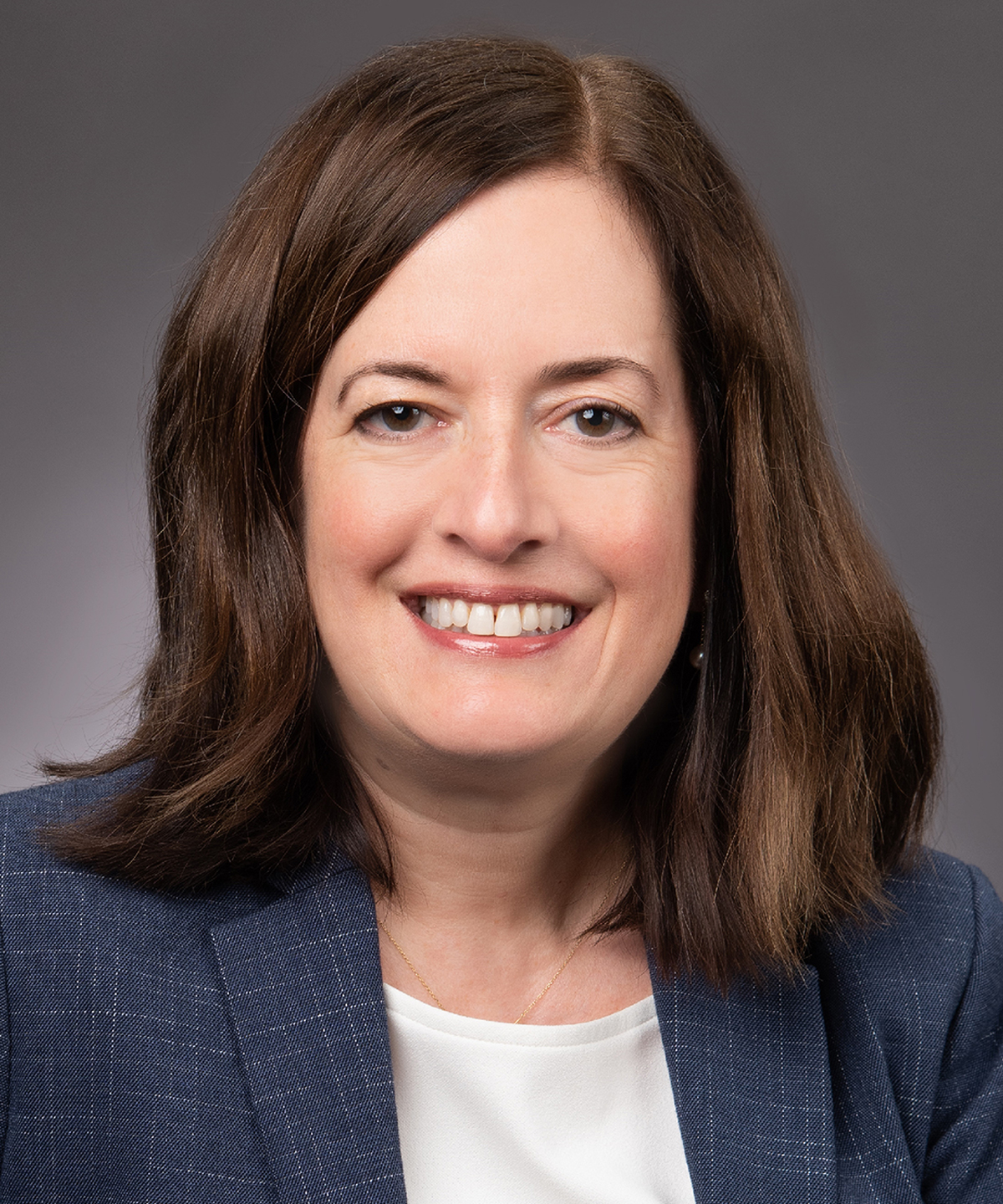
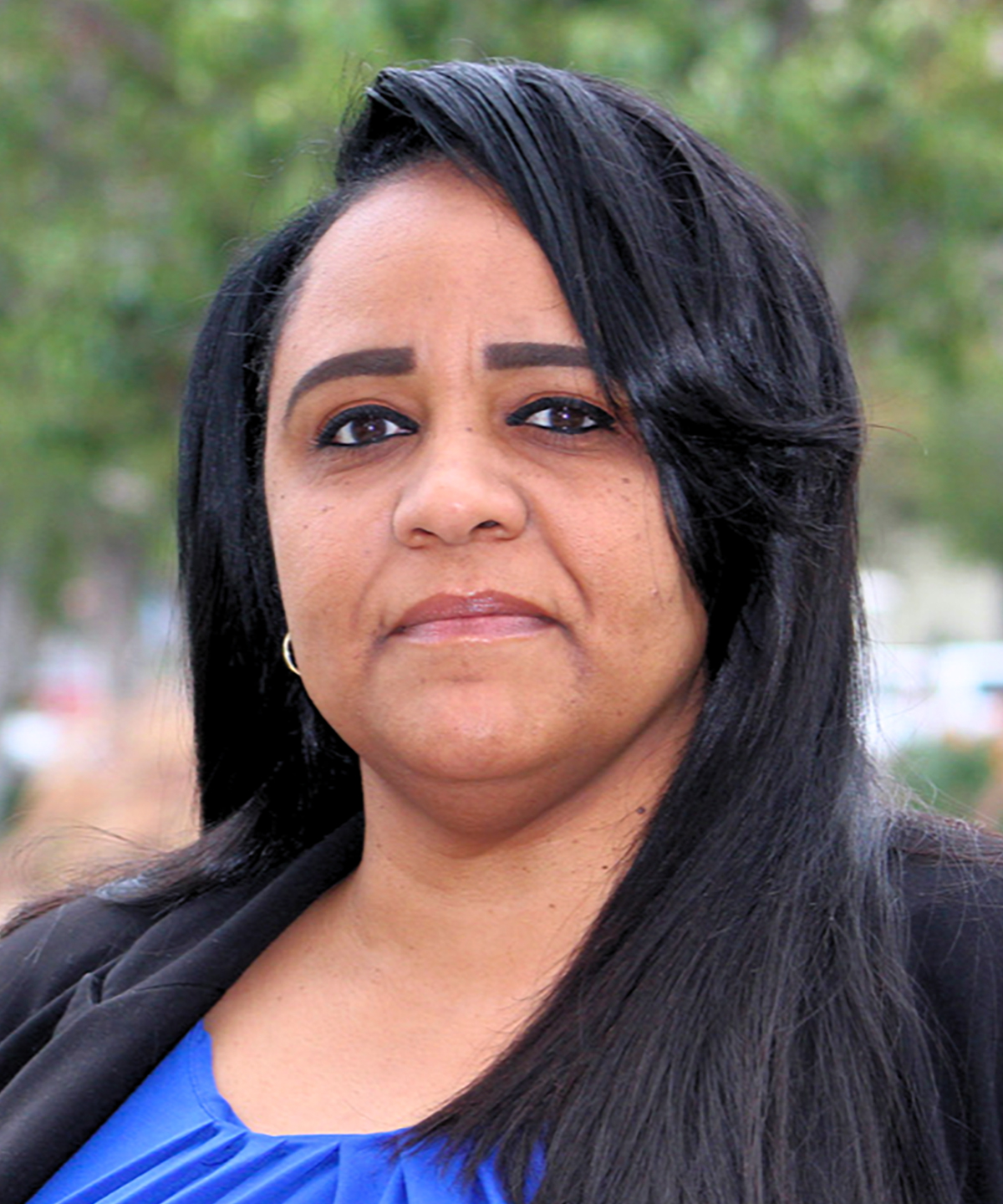
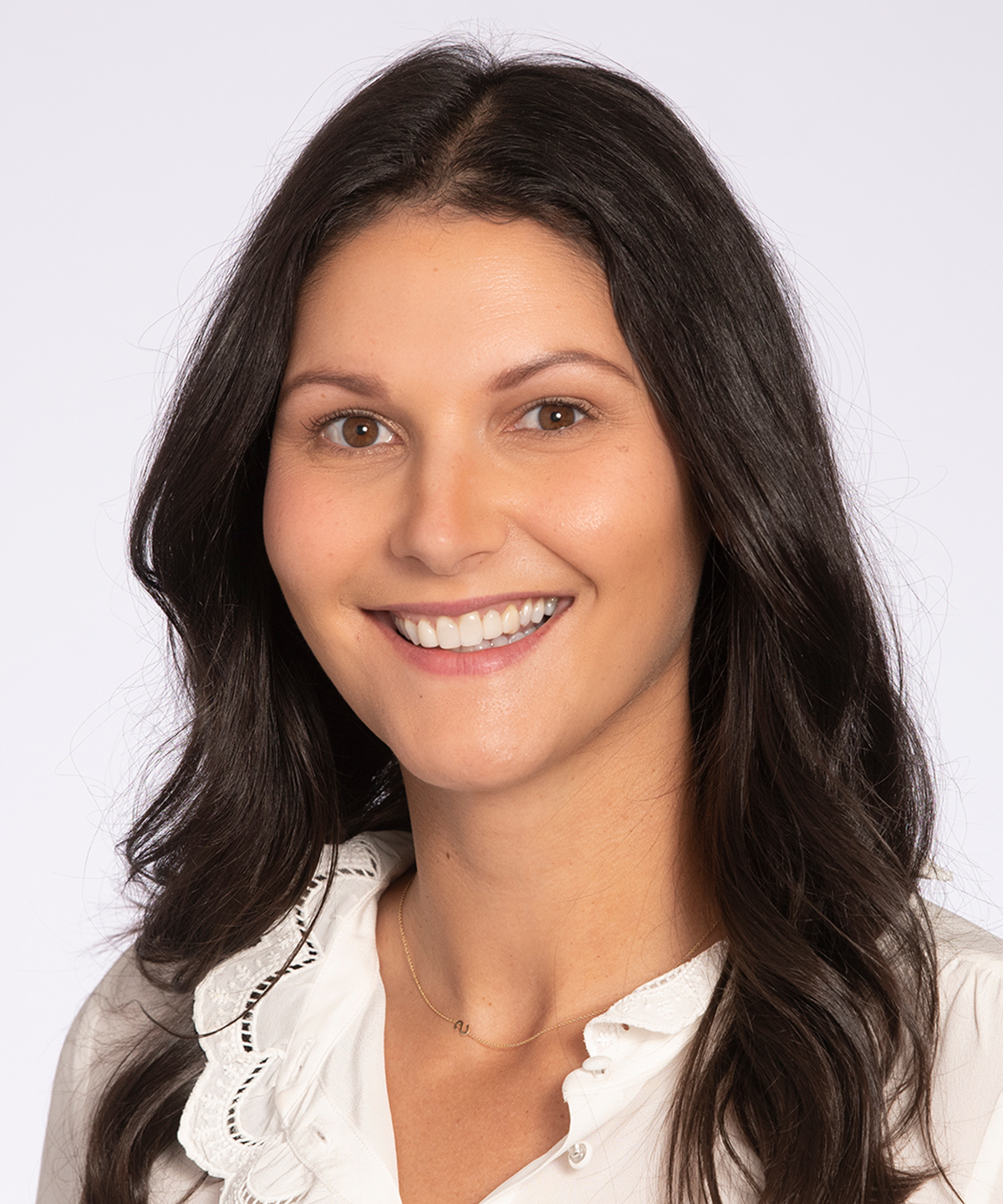
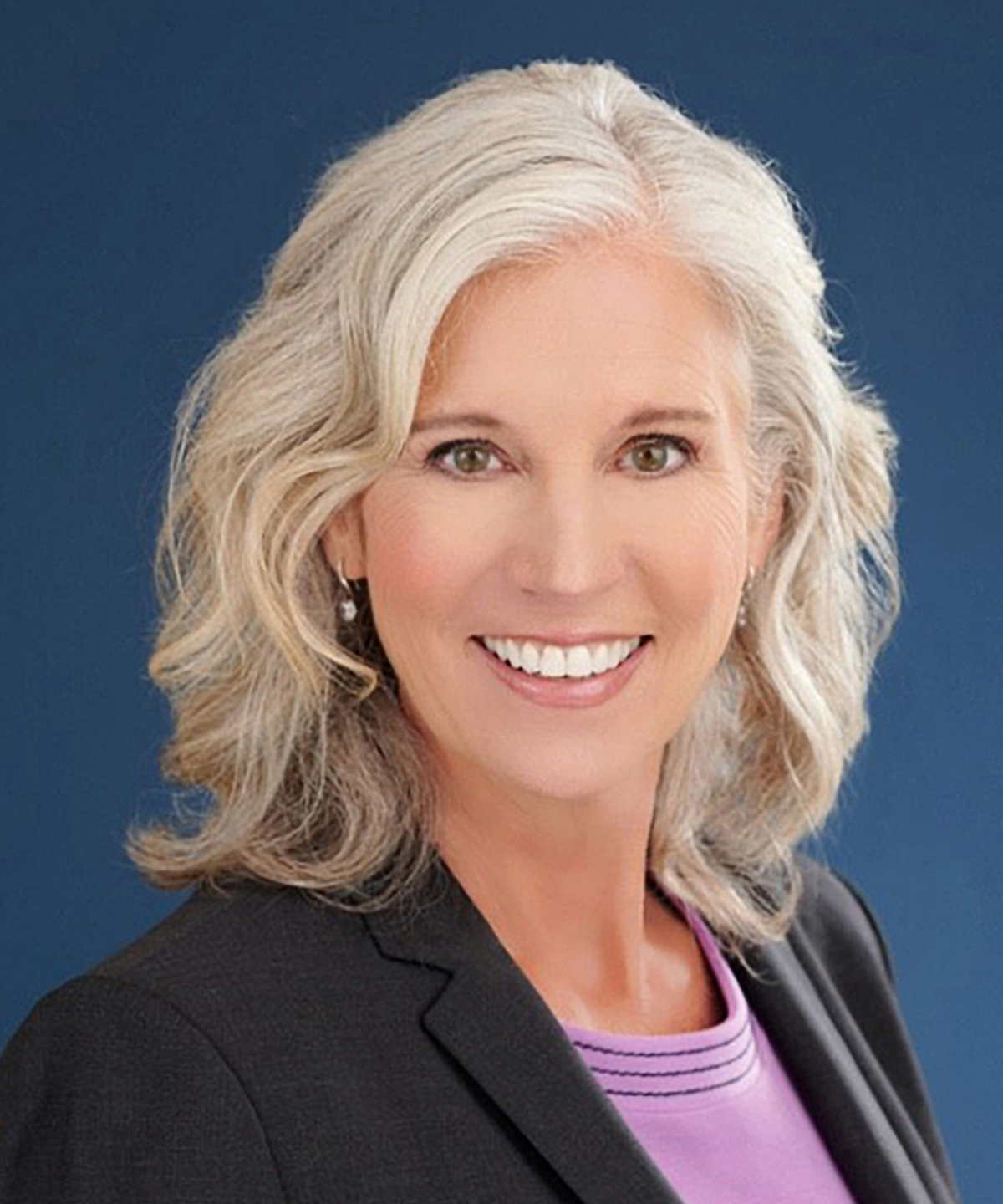

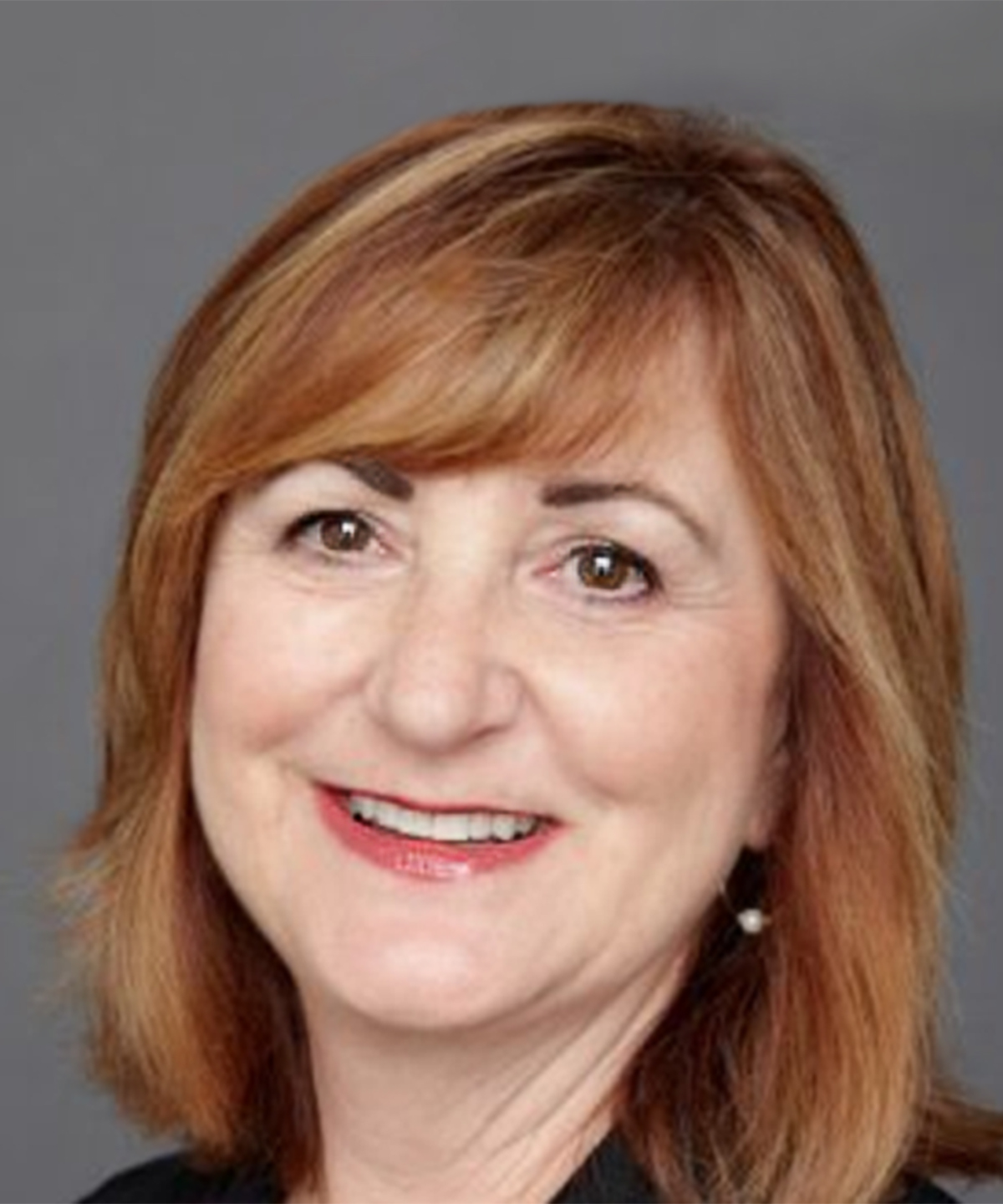
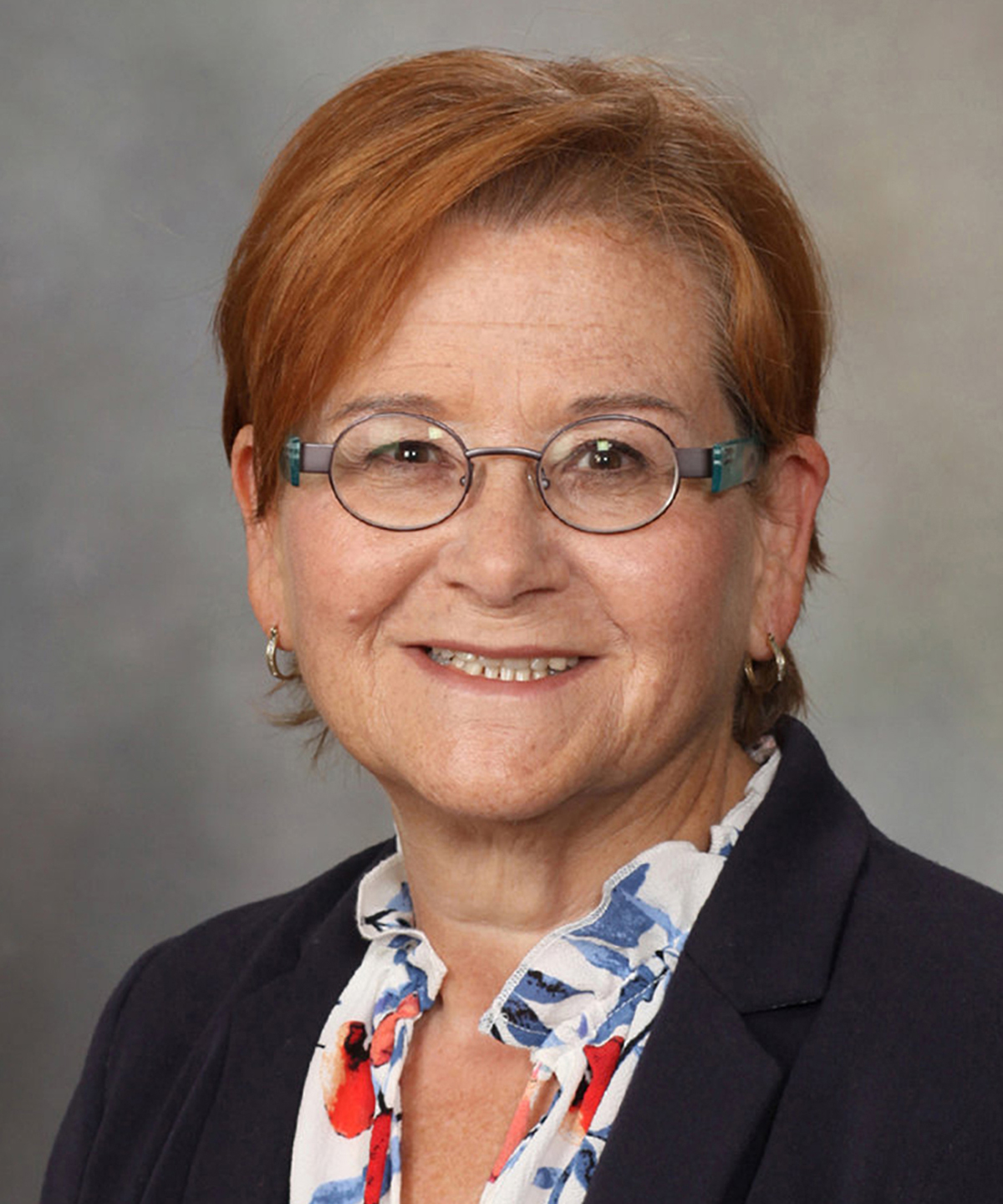
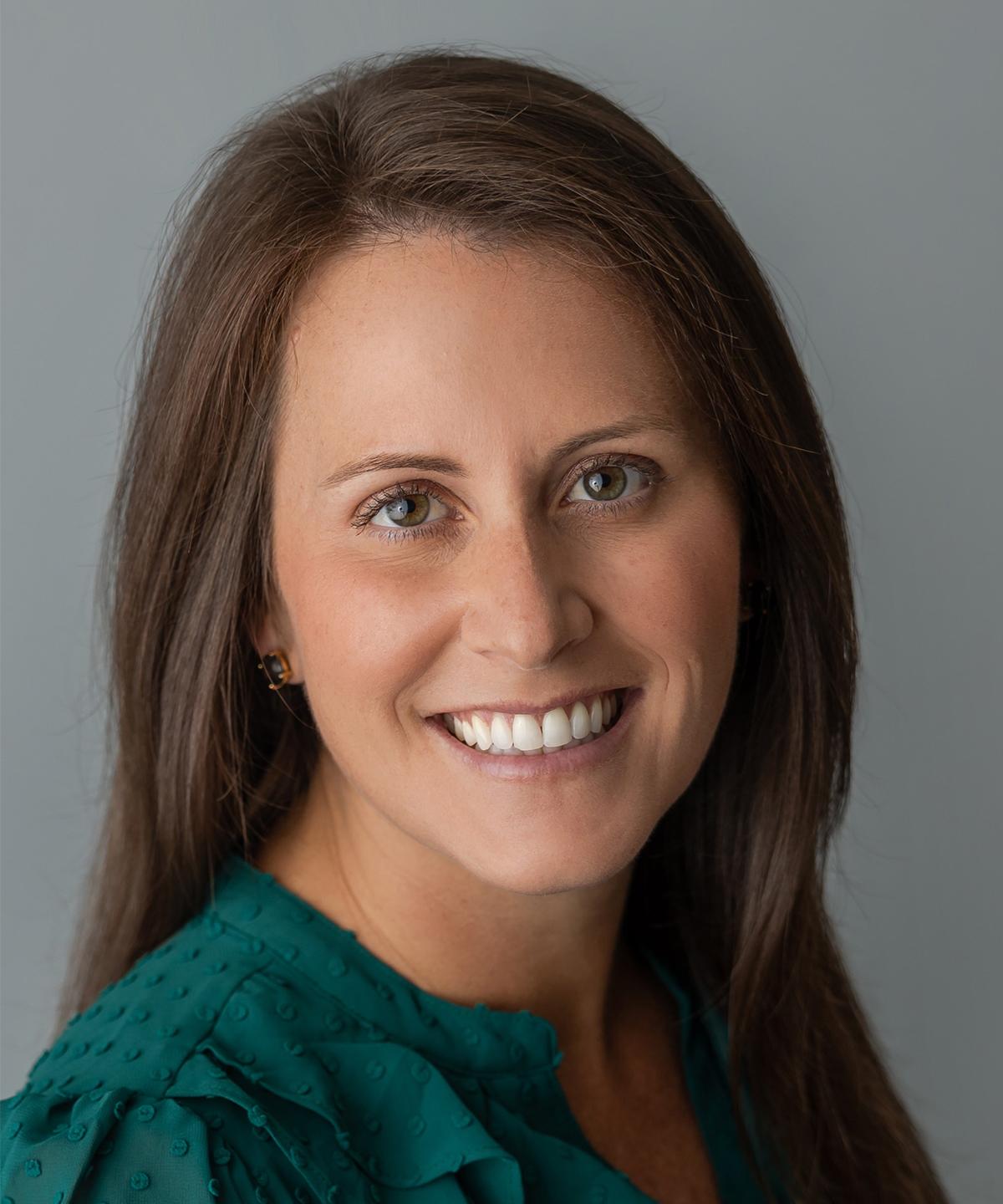
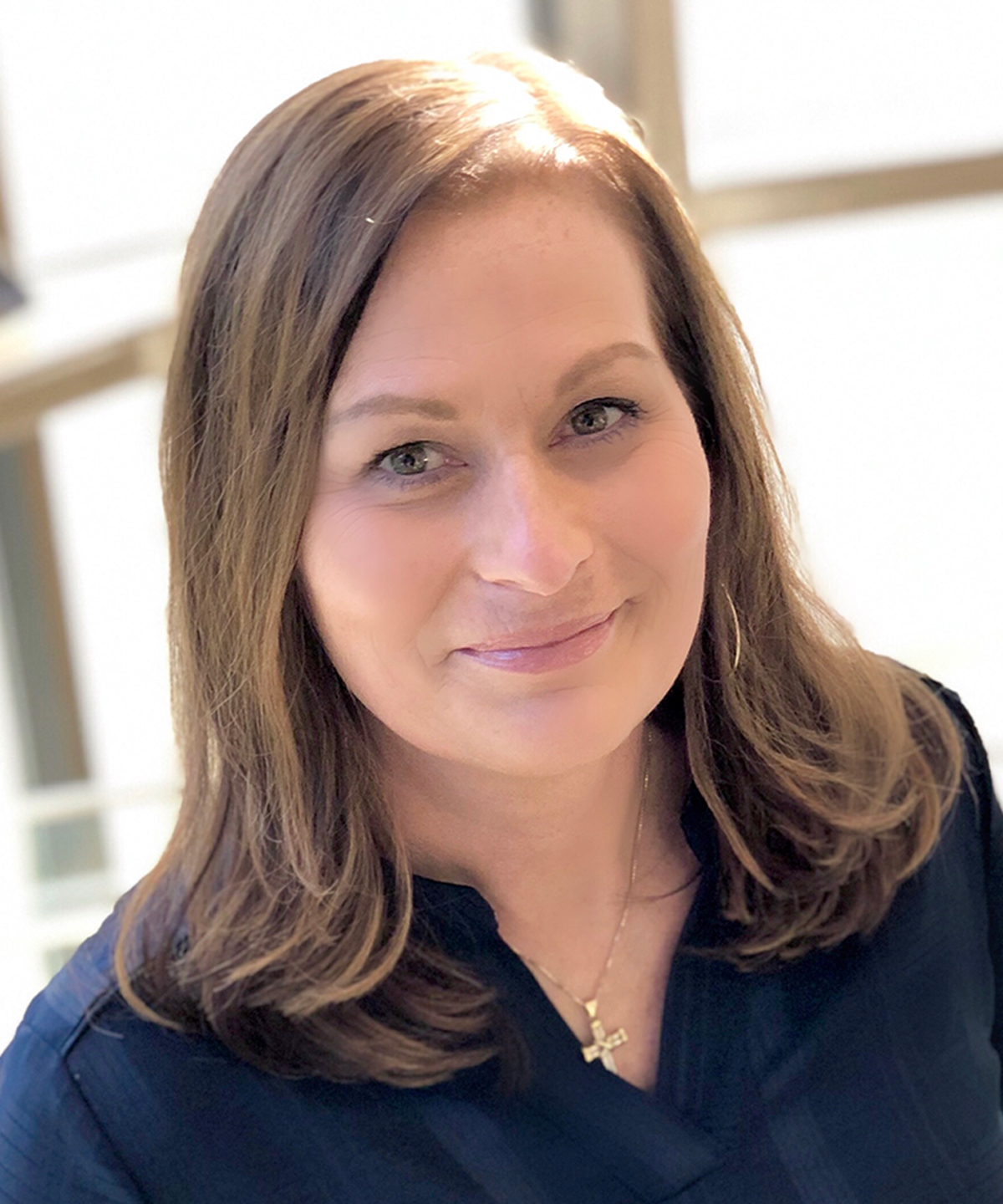

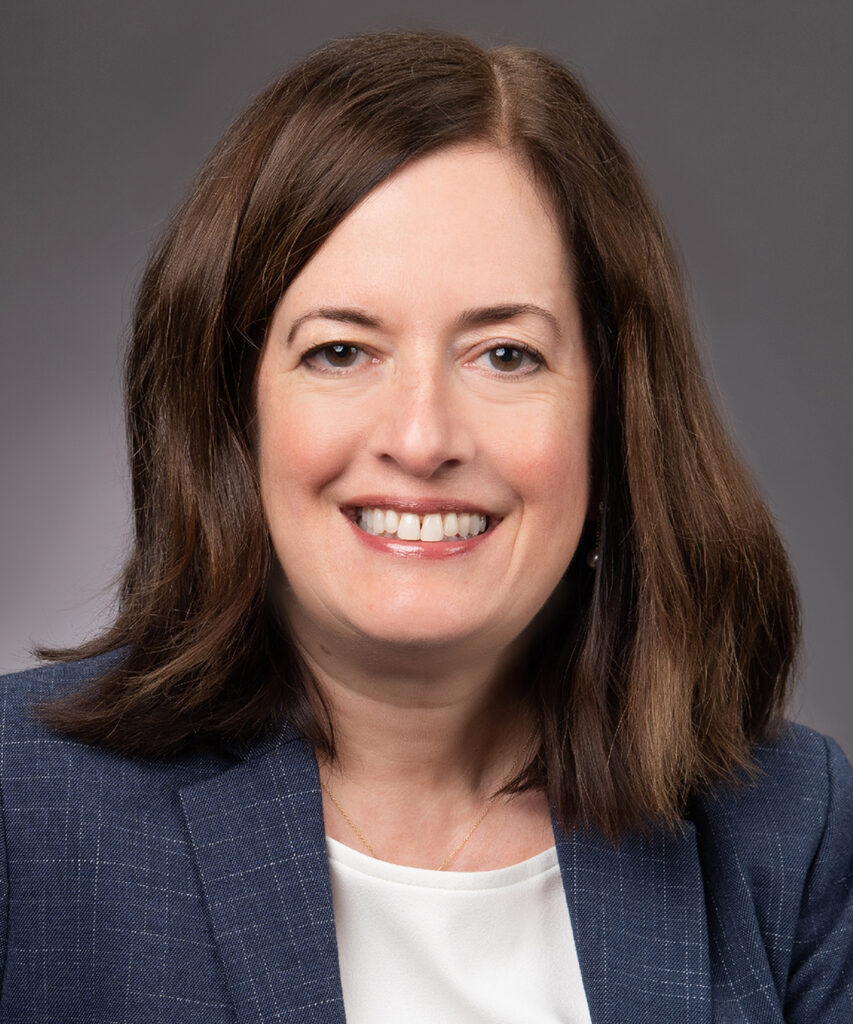
Ginger Henry
Vice President of Supply Chain at Legacy Health
Please tell us about your role/responsibilities within your organization.
As the Vice President of Supply Chain at Legacy Health, I oversee all functions related to supply chain for our six-hospital health system. We have a large ambulatory network including an urgent care company, a laboratory, a children’s hospital, a behavioral health hospital, a level-one trauma center and we are an owner in a health plan. We call our division Supply Chain Solutions – this is part of our rebranding efforts to emphasize how all our team members are part of our “one supply chain” team and that we are driving solutions in our organizations as a strategic partner. Our teams oversee many functions, including clinical value analysis, strategic sourcing & contracting, procurement, decision support / analytics, operations and distribution, courier operations (including for our laboratory), and mailroom services. We have developed a governance structure for supply and services decision-making – this group is sponsored by Legacy Health’s Associate Medical Director and has representatives from across the organization. This Steering Committee reports up through our senior leadership.
In what ways has the supply chain changed for the better over the last 2-3 years?
The pandemic has been so difficult for so many – our employees are exhausted, we have seen dramatic inflation, supply constraints and labor challenges. But there indeed have been some positive changes in our industry. Supply chain truly has been elevated – from the position we take in our health systems to the available career pathways. We are now seen more as strategic partners in our health systems than simply the people who move supplies. Our teams have learned a lot too – we are realizing the importance of resilience and being nimble. We’ve seen the benefits of partnerships with our key suppliers as well – the collaboration between providers and our suppliers is key to driving needed change and can directly impact how we can ensure the best care for our patients.
What about its challenges? What keeps supply chain leaders up at night heading into late 2022?
Inflation, labor challenges and backorders are expansive. Like most health systems, we are experiencing financial hardships. Despite these concerns, I am confident we can find ways to truly impact cost. I always say that we cannot let a good crisis go to waste! With the elevation of supply chain – and the need to impact spend – it is our time to advance how we support clinical integration and drive improvements in our structure and processes to ensure sustainable results. We have recently restructured our Clinical Value Analysis program and governance around supplies and services decision-making. Now is our time to elevate engagement with our physicians and clinicians, with all our customers.
When you hear words like diversity and equity in the workplace, what does that mean to you? How can those things contribute to the success of an organization?
At Legacy Health, DEI (Diversity, Equity, and Inclusion) is key to our strategy. We are to exemplify inclusiveness, and this starts within each leaders’ departments. This goal therefore ties into how we manage supplier diversity as well as how we look at our supply chain team. Are we supporting a diverse employee workforce, one that mirrors our community and patient population? How are we supporting development of these employees? What about our suppliers? Are we ensuring the local economy is being impacted in positively? If we do the right thing for our employees, our patients and our communities, then we are doing the right thing for our business as well.
Has anyone come alongside you to mentor you during your career? If so, can you tell us about that?
I am a lifelong learner and strive to continue to grow professionally and personally. Even if it wasn’t a part of a traditional program, I’ve been fortunate to have many mentors during my career, some being direct supervisors and others peers or even friends and family. I believe that mentors do not need to be formal and that you can find mentorship in so many people, all at once! I also have been a mentor to others – it’s amazing what I can learn when acting as a mentor to others!
My advice is to consider what you are good at and what you might want to improve upon – ask others for feedback too. Consider talking through a business challenge you are facing, even roleplaying scenarios with your mentor, a peer or a coach if you have one.
How do you focus on your growth as a leader?
I try to be aware of my areas where I have opportunities to grow and consider how I can work on these areas. I also realize that it’s okay to not be the best at everything – it’s just fine! I try to understand my strengths and know when I have team members with expertise in areas where I may not be as strong and let them shine. Leaders need to know when to listen, when to act and when to stand back and let others do their work.
As a learner, I also listen to business related podcasts, enjoy reading and audiobooks and networking, even outside the supply chain or healthcare industry. I also recommend leaning in on projects that may be completely unfamiliar to you. You can meet new people, learn different styles and see how other parts of the organization work. This is how I ended up in supply chain (coming from operations)!
What project or initiative are you looking forward to working on in the next 3-6 months?
There is a lot going on within supply chain at Legacy Health. Here are some of the key initiatives:
- ERP upgrade. I am leaning in to support our project team and am a key leader in our steering committing. We are trying to ensure that the customer experience is positive and that we address concerns with strong change management.
- Supporting financial resiliency. Our service line and clinical value analysis teams are reprioritizing our work to focus on cost savings. We’re also looking at how we can push the culture of being a clinically integrated supply chain. We need to change how we negotiate and manage our agreements and product categories. We must have clinical – including physician – alignment. Supply chain may be performing the tough negotiations, but we cannot do these in a vacuum. Supply chain is the enabler of our decisions, not the decision-maker.
- Customer relationship and engagement. We are formalizing our executive rounding plan with leaders and front-line teams. The goal is to follow a CRM (customer relationship management) methodology. Providing transparency to our customers of our initiative roadmap is key for engagement and support. We are providing continued support of tiered huddles to align with the new lean journey that Legacy Health has been implementing. Our lean work is focusing on how we manage rapid problem solving at the lowest level in the organization, allowing for staff development and growth.
- Talent Management focus. Ensuring we are monitoring local market pay trends for our teams is critical to recruit and retain talent. We also are revamping our internal governance structures to support standard work and problem solving. Having front-line team members on our process improvement journey – where we focus on process not people – supports our goal of employee engagement and allowing people to work at the “top of their licenses.” Our people are amazing, we want to let them shine.
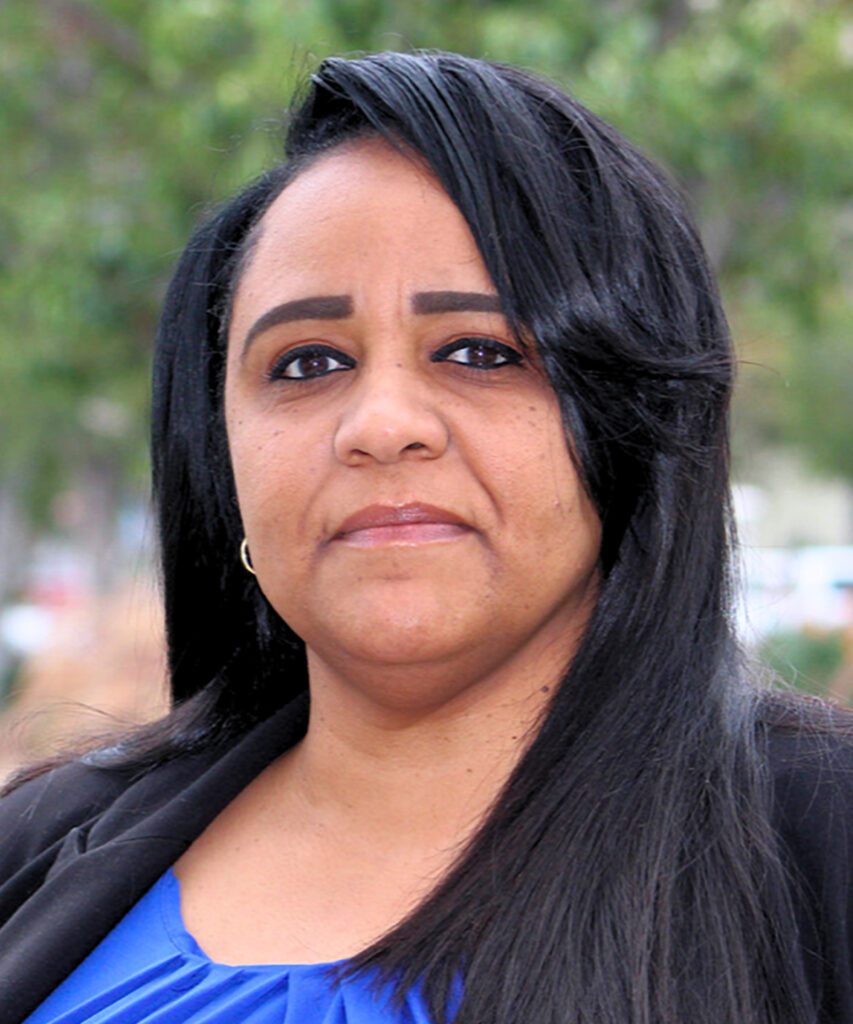
Mina Holland
Vice President of System/Corporate Supply Chain, KPC Global Management
Please tell us about your role/responsibilities within your organization.
My role at KPC Global is to manage the oversight of the Supply Chain operations at all seven acute hospitals. Besides managing the Supply Chain operations, I am also responsible for the contract negotiation of all product categories and purchase services, as well as the implementation of cost savings and standardization projects that come from the contract negotiations. I am also involved in the negotiation of capital purchases.
In what ways has the supply chain changed for the better over the last 2-3 years?
Our hospital executives’ continuous collaboration regarding cost savings and standardization has improved drastically over the last few years. In the past, cost savings and standardization were not a top priority for hospital executives. However, since the COVID pandemic, the support we receive from hospital executives to improve the hospital’s supply and service expenses has moved to the front of the line.
What about its challenges? What keeps supply chain leaders up at night heading into late 2022?
Lack of supply availability continues to provide ongoing challenges. With that being said, availability has improved over the last six months. More supplies are available compared to those available to purchase during the previous 18 months. Another issue is the lack of available labor for our service needs from our vendors. This issue creates service delays.
When you hear words like diversity and equity in the workplace, what does that mean to you?
As a woman Supply Chain leader, I think of opportunities when I hear words like diversity and equity in the workplace. I appreciate that diversity and equity allow others to share their knowledge and leadership skills. Diversity and inclusion are an integral part of KPC Global’s mission to ensure its patients and their families “Enjoy Life in Great Health.”
How can those things contribute to the success of an organization?
Diversity and equity in the workplace will ensure that the best possible individual is hired for a job they can manage and fulfill successfully for the organization. The benefit from this opportunity most likely drives a cost-effective, efficient operation for the organization, directly impacting the bottom-line.
Has anyone come alongside you to mentor you during your career? If so, can you tell us about that?
I have had many mentors that have advised and guided me during my career. My top four mentors are my mother Margo Salari, Debbie Pease, Debora Turner, and Mark Hess. All four have played an important and instrumental role in my career. They have guided me on my Supply Chain Leadership journey. I want to give a special thank you to each of them.
How do you focus on your growth as a leader?
One way I focus on my leadership growth is my willingness to be a great role model for my three sons, Anthony, Patrick III, and Christopher. I want them to know that the work is never done, and you must always keep working to improve yourself and grow in your leadership role. Another focus I have is providing our Founder and Chairman, Dr. Chaudhuri, with my best efforts to be the greatest Supply Chain professional on his team. It is important to me that all KPC hospitals are led by a strong and efficient Supply Chain department. Lastly, my focus also comes from my love for being a Supply Chain Leader. I work hard and long hours in the office (thanks to my husband Patrick’s understanding) to become the best Supply Chain Leader possible. I look forward to the next 20-plus years of growth and work within Healthcare Supply Chain.
What project or initiative are you looking forward to working on in the next 3-6 months?
I will continue working with the department cost-saving committee teams I have established since joining KPC. The top three goals of the committees are cost savings, standardization, and contract compliance. Besides the committee team initiatives, I will continue to implement the best practice Supply Chain operation improvements possible.
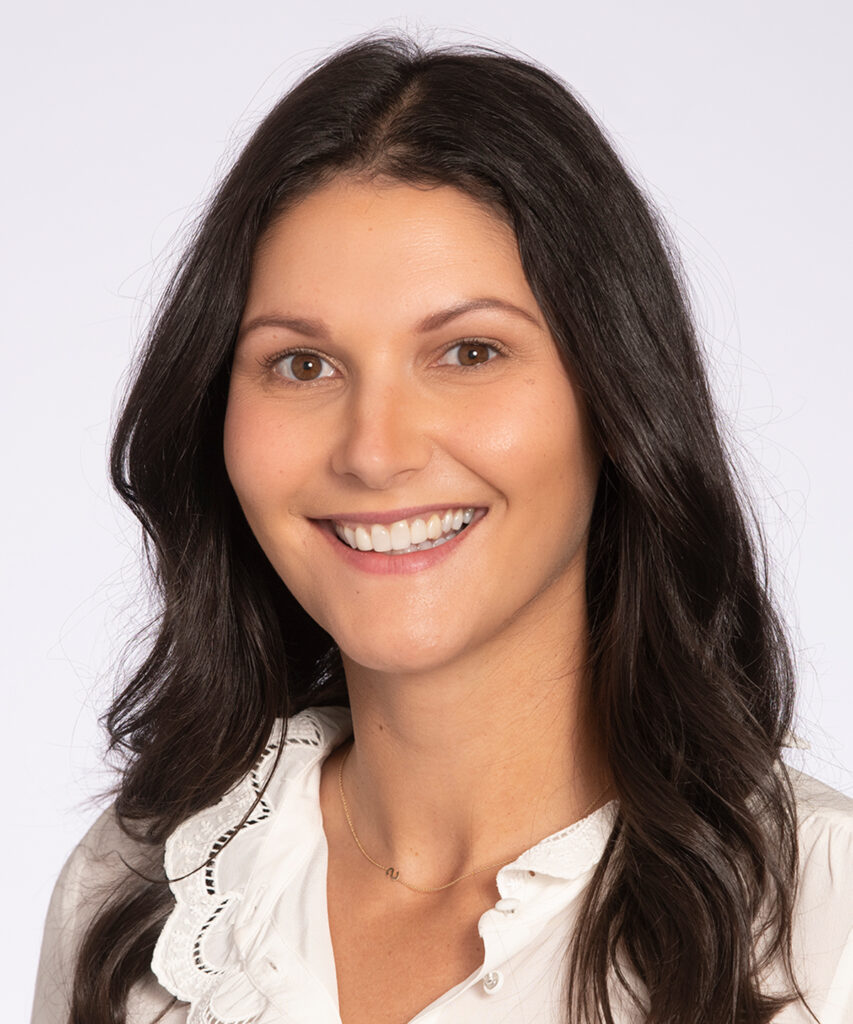
Laura Johns
Administrative Director for Supply Chain and Support Services, Cleveland Clinic
Please tell us a little bit about your role and responsibilities within your organization.
As the Administrative Director for Supply Chain and Support Services at Cleveland Clinic, I lead a team responsible for all aspects of our business operations, including budget and workforce management, communication, employee engagement, strategic planning, goal setting, project management and compliance, for our global department that spans sourcing, materials management, data and technology, and patient support services. I also lead our supplier diversity, sustainability and resiliency initiatives. My team thinks of ourselves as “the glue,” working closely with our CSCO, leadership team and stakeholders across the organization, and externally, we make connections and help the department achieve objectives.
In what ways has the supply chain changed for the better over the last 2-3 years?
I like that wording, “for the better,” because I think, when it comes to supply chain, we focus a lot on the negatives that have come out of the pandemic. When I think of things that are “for the better”, the renewed energy around resiliency comes to the top of my mind. As we come out on the other side of the pandemic those impacted have had time to regroup and think, “How do we prevent this from happening in the future?” It takes trust, transparency, and communication among the providers, suppliers, GPOs and distributors to find solutions together.
The goal of our resiliency program is to eliminate backorders – it’s ambitious and requires a different level of partnership with our stakeholders. We are embarking on a journey to understand exactly where our products are coming from and as far back in the network as we can, so we can predict disruptions, plan for how to handle them, and respond effectively. From the suppliers we have spoken to, nearly everyone has been willing to help us get there. They may not be able to commit right away, but they are willing to work with us and move toward that goal.
It’s not just Cleveland Clinic that is having success on this journey, in my position as a board member of the Healthcare Industry Resiliency Collaborative (HIRC), I get to see this happening all over the industry. I think it has the power to really transform care delivery and provide the best possible care to our patients.
What about the challenges? What are supply chain leaders worried about right now?
We’re still dealing with shortages. We’ve heard the time directly after the pandemic described as the “new normal,” and I think there was this undertone of, “eventually this will go away.” But the reality is we are still seeing back orders at 10 times of what we did pre-pandemic levels. Each shortage requires hours to resolve and it’s incredibly reactive – it puts a huge strain on our employees. Couple that with staffing shortages and you have an environment ripe for burnout. I worry about our teams and that one day the product a clinician needs won’t be there. It’s why we are so focused on building a strong resiliency program.
When you hear words like diversity, equity, inclusion in the workplace, what does that mean to you, and how can those things contribute to the success of an organization?
I look at this question from two lenses. In my role in workforce planning I think about the diversity of our employees and talent pipelines as well as how we are creating an inclusive environment for everyone to come to work fully as themselves. It is critical to the future of our organization to have different backgrounds and perspectives.
In my role as supply chain supplier diversity liaison, I think about the impact local and diverse purchasing can have on our community. Cleveland Clinic’s main campus is considered an anchor institution within an underserved area. When we are able to bring on a local, diverse supplier, we make a big impact on the community. I feel excited about these projects because they can create impact on a macro-level. Ultimately, a focus on diversity, equity and inclusion is about enabling us to better care for our patients, community, organization and one another.
What about mentorship? Have you had anyone who’s mentored you, come alongside you during your career?
I’ve had several incredible mentors throughout my career. Having somebody “in your corner” who believes in you and whom you trust is invaluable, especially when you’re trying new things or getting outside of your comfort zone. My mentors have helped to bolster my confidence and provide space that it’s OK to fail. Or as I heard recently, “a first attempt in learning,” which I loved, because it’s so true. Trying new things is how you grow and mentors help provide guidance and guiderails to navigating new roads.
What are some ways that you try to grow as a leader?
In general, I have a growth mindset where I am always trying to learn new things and take on new challenges. It keeps things exciting and I feel fortunate to be in healthcare where the landscape is constantly changing and presenting new opportunities. Being a leader takes this to the next level because it’s not just “you” to think about – you have a team that’s relying on you to help them grow in their careers, too. As I take on new responsibilities, for example resiliency, I need to make sure I’m growing my team to take on new responsibilities so I can devote time to new initiatives. And as the team grows, you have to adapt your leadership style to their new skillset. It’s a constant evolution.
What project or initiative are you looking forward to working on in the next few months?
I am really excited about our resiliency initiatives. Next year, we are working to implement a multi-network solution, which is common in other industries but very novel in healthcare. It will enable us to better predict demand, match that to available supplier inventories, and understand potential impacts due to world events. It will give us the extra time needed to make inventory or substitute decisions and start to solve for the challenges I mentioned. I think it has the potential to completely change the industry.
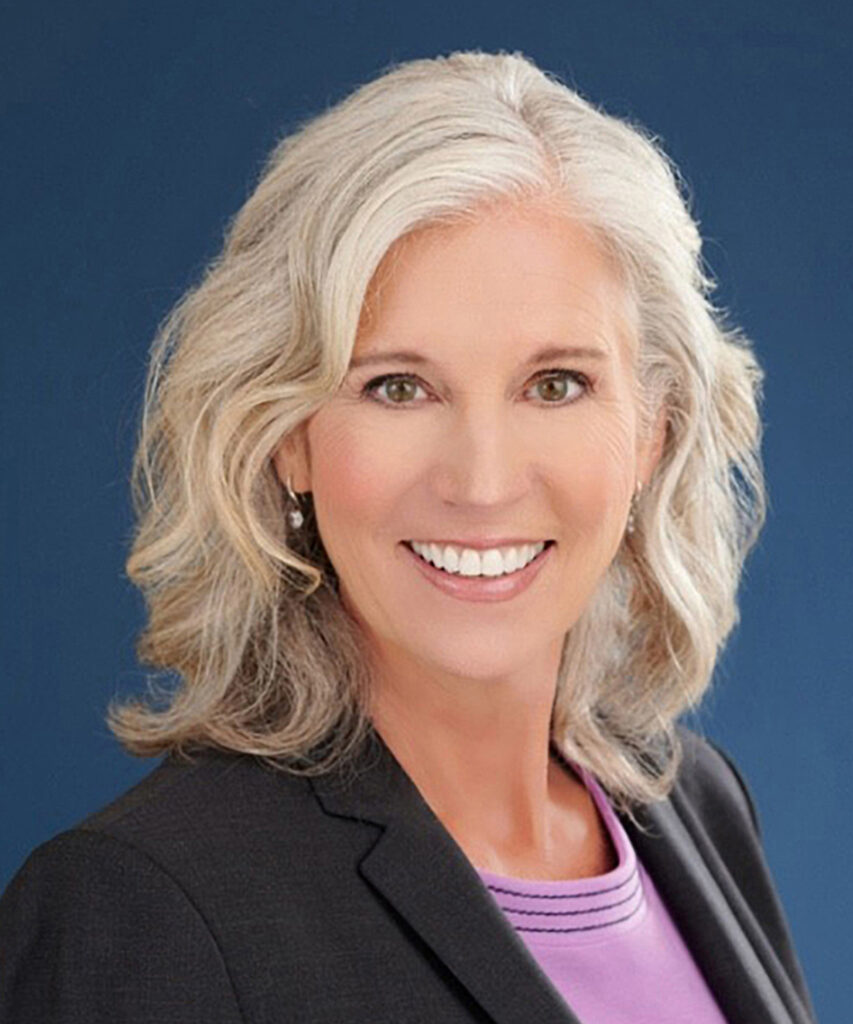
Laura Kowalczyk
VP Supply Chain and Support Services, UAB Medicine
Please tell us about your role/responsibilities within your organization.
I am responsible for the strategic direction of UAB Medicine’s end to end Supply Chain; Environmental Services; Food and Nutrition Services; Guest Services; Patient Advocacy; Patient Transport; and Spiritual Health.
In what ways has the supply chain changed for the better over the last 2-3 years?
I am thankful for the attention that the COVID pandemic has placed on the healthcare supply chain. All of us who have been in the profession for years have never doubted the supply chain’s importance to our clinical operations, but the pandemic highlighted its level of criticality and importance to patient care. With this added attention, we are experiencing both internal organizational as well as external industry focus on what resources are needed to support our disrupted supply chains. These resources include labor, data analytics, industry transparency and broadened clinical attention and participation.
What about its challenges? What keeps supply chain leaders up at night heading into late 2022?
I continue to be concerned about our labor force from two perspectives. First, like our clinical counterparts, the supply chain teams have been and continue to be disrupted by the impacts of the COVID pandemic globally and locally. Disruptions continue to exist on a daily basis and this is taxing our teams resulting in burnout and increased turn-over rates. Secondly, I am concerned about where we will continue to find talented staff to join our supply chains. Our industry continues to compete with our retail, automotive and manufacturing counterparts who may be able to offer schedules and benefits that are not necessarily available in our 365, seven day per week healthcare environment. Additionally, the increased acceptance and movement toward a remote workforce in our corporate teams can be a double-edged sword. We find increased responses to openings in these areas; however, we are also competing nationally on salary rates which has added a new challenge to recruitment for these positions.
When you hear words like diversity and equity in the workplace, what does that mean to you? How can those things contribute to the success of an organization?
I am personally very passionate about this topic. I love how our Chief Diversity Officer defines these elements for us at my organization: Diversity is a fact, Equity is a choice and Inclusion is an action. These tenants are critical to developing a healthy, well-rounded team, but critical to creating a workplace that brings in differing perspectives, experiences and thought. In all my areas of responsibility, we are implementing a new recruitment and interview process that I am excited about. It is designed to bring an intentional focus on diversity, equity and inclusion which we believe will result in increased staff recruitment and retention.
Has anyone come alongside you to mentor you during your career?
I like to say that there has been a team that has mentored me along my career. I did not start my career in the Supply Chain operations so when I entered it through my legal positions there were many individuals who took the time to teach me and encourage my growth in this wonderful and diverse field. The greatest mentoring for me, however, has been from my own leaders and staff who teach and coach me every day and are the catalyst for continual efforts to improve my knowledge and my leadership.
How do you focus on your growth as a leader?
I sincerely believe that leadership is the most important responsibility that I have in my role. I have always been fascinated by what characteristics define a good leader. This fascination has led me to read about many leaders across many industries and to consistently seek feedback from other leaders, staff and experts formally and informally. I also participate in any opportunities offered through our many leadership developmental educational sessions whether as a panelist, teacher, or student. I am always so thankful to be able to listen and learn from other leaders on how they manage the many challenges of leadership in our complex environment.
What project or initiative are you looking forward to working on in the next 3-6 months?
There are several projects that we will be concentrating on in UAB’s Food and Nutrition and Environmental Services departments focused on patient experience and enhancement of our services. Now that we are moving away from COVID, we are getting some of these initiatives back on the table. In the supply chain, we are in the midst of several planning sessions to take a step back and re-look at multiple processes that either no longer serve our mission or have become over burdensome and need to be re-tooled. We are also looking at our supply chain roles and those functions that we thought were going to be temporary changes that now need to be hardwired and restructured to continue to meet the demands of our large organization.

Dameka Miller
Vice President, Strategic Sourcing & Value Analysis for Trinity Health, Livonia, Michigan
Please tell us about your role/responsibilities within your organization.
I have the privilege of working with a passionate and talented team of individuals committed to Trinity’s vision of improving the health of our communities and each person we serve. Together we lead sourcing, value analysis, supplier quality and impact purchasing programs to manage over $8 billion in non-labor expense across 25 states, 88 hospitals, 131 continuing care locations, the second largest PACE program in the country and 125 urgent care locations.
In what ways has the supply chain changed that makes value analysis more important to hospitals and health systems?
Value analysis is essential to delivering patient care right now. Product accessibility has not completely recovered post-pandemic. While PPE is available, shortages and backorders for a significant number of critical patient care items persist. The daily work of value analysis teams has shifted to addressing product shortages, providing guidance on utilization to conserve supply and verifying alternate items that allow us to continue treating our patients safely.
When you hear words like diversity and equity in the workplace, what does that mean to you? How can they contribute to the success of an organization?
Attention to diversity, equity, and inclusion signals that an organization is striving to achieve a culture in which everyone is comfortable being themselves at work. Being biracial, my appearance frequently raises questions from colleagues about my ethnicity. Often it is innocent curiosity; however, I have been subject to several offensive comments and behaviors by both peers and leaders. The creative energy and productivity lost navigating these types of distractions is not insignificant nor unusual for anyone perceived to be different in their work environment. Organizations get the best from their people when they do not feel guarded and judged simply based who they are.
Has anyone come alongside you to mentor you during your career? If so, can you tell us about that?
My career began with three mentors that shaped who I am as a leader. They were my direct leaders and for them, leadership was about making others better. There was intentional focus on both my personal and professional goals, and they positioned me for opportunities for continued growth. Nearly 20 years later, one remains a mentor and when I thank her for the impact she has had on my life, she reminds me to pay it forward. I was incredibly fortunate to begin my career with people-focused leaders and aim to have the same impact on others.
How do you focus on your growth as a leader?
I study leaders across industries for reflection on leadership styles and philosophies that led to incredible successes and failures. I am most inspired by the podcast, “How I Built This,” featuring stories of entrepreneurs that built well-known brands and what they learned as they established their companies. It is also important for me to know how I am showing up and perceived by others, so I regularly ask for feedback from my own leader, who I trust and respect. I am purposeful about initiating the conversation to create space for honest, real-time observations. Finally, mentoring emerging leaders keeps my perspective fresh and offers insight into what motivates the next generation.
What project or initiative are you looking forward to working on in the next 3-6 months?
Trinity’s vision of improving the health of our communities and each person we serve inspires me and my team. It gives our work purpose. We have been building an Impact Purchasing Program, which is the intentional use of our buying power to positively impact the communities we serve. The program connects Trinity’s supply chain to the organization’s DEI and Community Health and Well-Being strategies. Using a framework from the Healthcare Anchor Network (HAN), we started with supplier diversity. Over the next several months, we will be focused on local spend and sustainability to continue growing the Impact Purchasing Program.
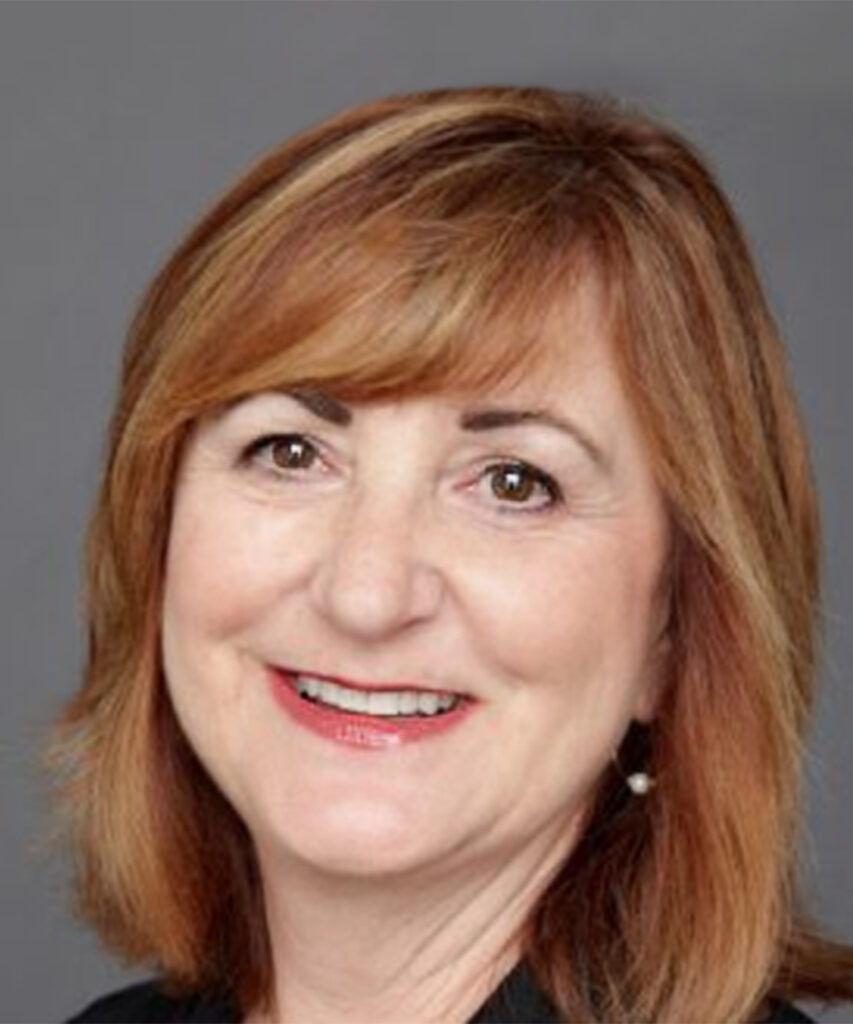
Sandra Monacelli
Vice President, End-to-End Supply Chain, Value Analysis, Nexera (a consolidated subsidiary of Premier)
Please tell us about your role/responsibilities within your organization.
I currently oversee Nexera’s Clinical Supply Chain Integration offering, leading a team of clinicians, supply chain analysts and other experts focused on system-wide value analysis at a variety of healthcare organizations.
In a post-pandemic world, I believe that value analysis in healthcare has found renewed purpose. Today’s value analysis enables decision making on high-quality supplies, services and equipment by first considering care delivery, safety and outcomes as well as total cost. It’s looking at product evaluation and selection in the context of supply chain resiliency and disruptions, environmental sustainability and the continuing shift to value-based care, among other vital considerations. This is my personal passion, and the important work my team is focused on.
Our role is to connect and support multidisciplinary teams – including clinicians, supply chain and organizational leadership – to collaboratively identify both clinical and financial goals via the supply chain. We’re helping healthcare organizations prioritize, implement and monitor cost savings opportunities while maintaining or improving quality and outcomes.
In what ways has the supply chain changed for the better over the last 2-3 years?
COVID-19 has been a game changer for the supply chain. While we’ve seen significant challenges, the pandemic placed the supply chain front and center and has allowed our function to be increasingly proactive and collaborative with stakeholders across an organization.
We’ve seen the emergence of innovative sourcing strategies, deeper clinical integration, and technology and data for greater visibility and disruption mitigation, automation and efficiencies – and for cost savings.
The supply chain has and continues to evolve away from an isolated, transactional purchasing activity and toward a strategic function that’s helping healthcare organizations deliver better care, improve outcomes, enable population health strategies and lower costs.
What about challenges? What keeps supply chain teams up at night heading into late 2022?
Throughout 2022, both Nexera and Premier have been laser focused on relieving the pain our healthcare organizations are feeling because of the lingering implications of COVID-19 and the resulting impact on supply chains, product shortages, labor challenges and rising costs.
And I believe our team’s perspective is truly unique given our work over the last three years. Our embedded resources help members manage their supply chains on a day-to-day basis. We have the manufacturing perspective through S2S Global and Premier’s domestic investments alongside members. We’ve worked with New York City officials to determine the appropriate strategy for stockpiling and managing supplies throughout the pandemic. We’re coordinating across the industry – partnering with providers, suppliers and the government – to drive greater visibility and transparency to help mitigate disruptions.
Now and looking ahead, healthcare organizations require innovative solutions around long-term resiliency and product availability. With providers and supply chain teams asked to do more with less, resiliency also means financial resiliency – and pursing strategies that drive savings, enable margin improvement efforts and offset higher prices.
A clinically integrated supply chain presents a significant opportunity amid this backdrop, and with value analysis as a core operational mindset of how we do business. We’re bringing all stakeholders to the table – looking comprehensively at cost, quality and outcomes to generate opportunities for improvement. We’re also leveraging the value analysis process to vet and implement new technologies and ensure the right fit for an organization and its journey. My team views our role as critical to making sure everyone is heard and enabling strong partnerships across the supply chain.
For me, supply chain resiliency is about helping to ensure access to vital supplies and services providers need to care for patients, at the best possible prices and for the best possible outcomes. This is what we’re here for.
When you hear words like diversity and equity in the workplace, what does that mean to you?
Equity is achieved when every person can achieve their full potential, irrespective of socioeconomic status, race, ethnicity or other social circumstances. Diverse teams and inclusive cultures have proven to drive better outcomes, bringing new perspectives, capabilities and competition to the market. And it delivers broader societal benefits by generating economic opportunity for traditionally disadvantaged communities.
To support diversity, equity and inclusion (DEI) efforts, one key area healthcare organizations are turning to is the supply chain, which is uniquely positioned to expand social impact through inclusive sourcing strategies and diverse supplier partners.
Through education and support, hundreds of diverse supplier contracts and artificial intelligence (AI)-powered analytics technology, health systems today are leveraging Nexera and Premier capabilities to increase spend with diverse suppliers, meet broader DEI goals and support local economies by choosing local, qualified and diverse suppliers.
Has anyone come alongside you to mentor you during your career?
Throughout my career, I have been grateful to have had a number of supportive mentors who have left an indelible impact on me personally and on my career. To this day, I continue to learn from colleagues both past and present and other individuals who have been instrumental in my growth and success.
Upon reflection, my first and most consistent mentor has probably been my mother who always told me that respect and kindness are critical to engagement and a meaningful seat at the table. She used to say: “answer the phone with a smile on your face, and the person on the other end can hear it in your voice.” This advice from her, and from others as well, has helped serve as a North Star for how I show up every day.
How do you focus on your growth as a leader?
As a leader, I’m just one person – but if I grow, then my whole team can grow, too. I’m also a non-traditional leader in that I’m consistently thinking and looking outside the box for new approaches, strategies and solutions that can enable improvement. I put myself out there and really try to immerse myself in different perspectives, and whenever I get the opportunity to grow both personally and professionally, I jump at it.
What project or initiative are you looking forward to working on in the next 3-6 months?
I don’t think I can pick just one! Broadly speaking, I’m looking forward to my team’s continued work with healthcare organizations and supplier partners to further advance a clinically integrated supply chain throughout our nation’s healthcare system.
The projects I’m most looking forward to this year will support clinician engagement and integration, a multidisciplinary team approach, strong partnerships with suppliers for data and education, and technology for ongoing monitoring and identification of key opportunities.
The journey to cost, quality and outcomes improvement is long-term, and it requires us to make continuous improvement a core competency and priority. I’m looking forward to continuing to help drive reduced supply chain costs while maintaining quality and positive patient outcomes for our healthcare organization partners.
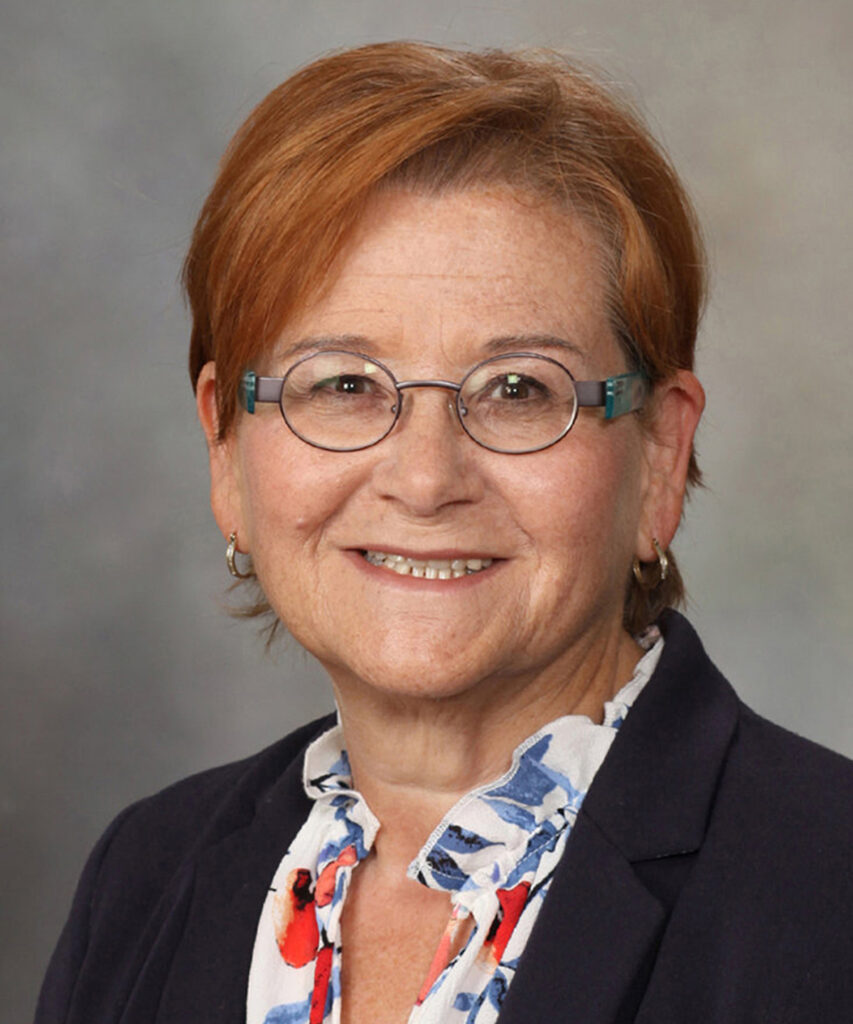
Terri Nelson
MAHA, BSN RN, Senior Director Value Analysis, Mayo Clinic
Please tell us about your role/responsibilities within your organization.
My title is Senior Director of Value Analysis for the Mayo Clinic, a position I have developed over the last 20 years. I am responsible for managing the Clinical Quality Value Analysis (CQVA) Team. CQVA is a work unit with Supply Chain Management which focuses on three core competencies:
- Category Management, the facilitation of clinical input into the category management contracting strategies
- Operational Support, assisting campuses and service lines with product requests and/or conversions
- Product Management, addressing product backorders, quality issues and recalls.
In what ways has the supply chain changed that makes value analysis more important to hospitals and health systems?
Supply Chain Management is not just about acquiring and moving products. SCM has developed relations across the healthcare organization to proactively support the clinical practice. This includes the formation of Clinical Value Analysis (CQVA) work units. The objective for this unit is to proactively work with service lines in identifying products which will support best practice and improve patient care outcomes. CQVA team is comprised of nurses with varied clinical backgrounds. The addition of clinical staff within Supply Chain Management provides a voice for the healthcare team in identification of products which are reviewed by using the defined value analysis processes. The value analysis process assures product request will be reviewed and approved by appropriate clinical users, conversions are completed in a timely manner and compliance is addressed based on strategies outlined in the contract.
When you hear words like diversity and equity in the workplace, what does that mean to you?
Diversity provides a different perspective and insight into the functions of a team, department, and an organization. These insights will assist in making better decisions within CQVA. When I think of the term equity; everyone has an opportunity to voice their recommendations and opinions. It does not mean we all agree, but we listen to one another’s voice which will provide a richer understanding and promotes better decision making.
How can they contribute to the success of an organization? Giving yourself the time to consider different voices and perspectives as part of the value analysis process may take longer, but the time will improve the outcomes for our patients and staff.
Has anyone come alongside you to mentor you during your career?
During my 45 years in healthcare, I’ve had several mentors, both internal and external. I looked for a mentor who was in a role which was part of my career goals. One of these goals was to become a nursing leader. My longest mentoring relationship was with a nursing administrator. When this individual talked, people listened, she was engaging and thoughtful in her comments. She had the skill to lift you up and you wanted to become the best at what every role you had within the organization. I respected her and wanted to learn from her. She shaped the professional I have become.
How do you focus on your growth as a leader?
I have always been interested in learning new ways to achieve better outcomes for the staff I have worked for; yes, a good leader works for the staff they support. Over my career I have found that communication skills have the biggest impact. The ability to articulate what you do and the value you add to an organization is key. The other area of focus for me is to step out of my comfort zone, take risks and try new approaches.
What project or initiative are you looking forward to working on in the next 3 to 6 months?
The last 24 months have been stressful on all of us. They have taken a toll on supply chain. We have learned a lot on what works and what can be improved on. Over the next 3 to 6 months, I am interested in improving our interactions and transparency with our key suppliers on product management solutions.
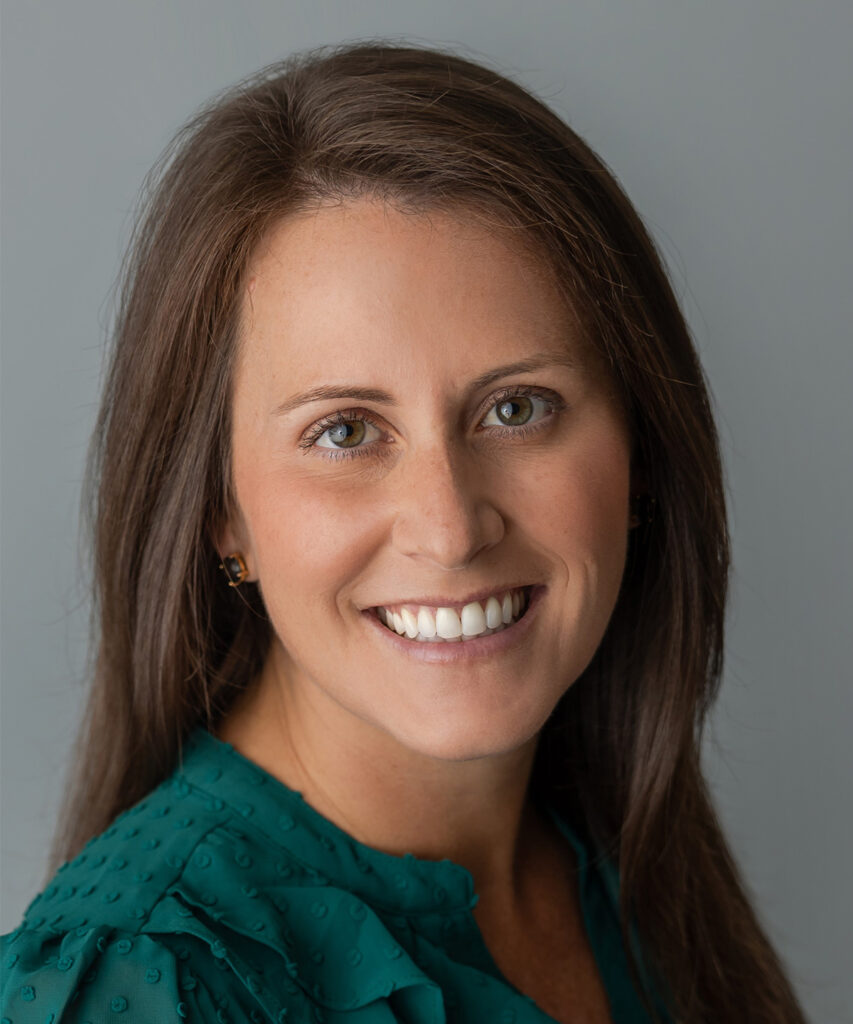
Leann Spadaro
Director of Supplier Commercialization and Engagement, Premier Inc.
Please tell us about your role/responsibilities within your organization.
I am currently the Director of Supplier Commercialization and Engagement for Premier’s newly launched Remitra™, a cloud-based procure-to-pay technology that seamlessly automates supply chain financial processes – accounts payable (AP) for healthcare providers and accounts receivable (AR) for suppliers – to reduce waste and create efficiencies on both sides of the supply chain. In my role, I manage Remitra’s supplier network, supporting suppliers as they leave paper-based, manual AR processes behind and helping them realize the advantages of digitizing invoices and payments.
In what ways has the supply chain changed for the better over the last 2-3 years?
Without question, it has been a challenging two to three years for healthcare supply chain as a result of the COVID-19 pandemic. Once a buzzword, ‘supply chain resilience’ became a top priority and today, is a sought-after business best practice. Resiliency today also means financial sustainability – and pursuing strategies that drive savings and productivity for the long term.
At Premier, we’re working with our health system members and suppliers in several key areas to address long-standing supply chain vulnerabilities and bolster resiliency. For instance, providers and suppliers across the nation are leveraging Remitra™ to mitigate workforce challenges, modernize AP and AR processes for better collaboration with one another and find savings opportunities all in one place.
Another way we are working with our members and suppliers is in the area of supplier diversity programs. Diversity programs broaden the pool of potential suppliers and promote competition, which can improve product quality and drive down costs. As a result of the pandemic, traditional supplier diversity programs within the supply chain are giving way to more strategic, collaborative approaches between providers and local small businesses.
We’re focused on helping diverse suppliers achieve the same savings, workforce optimization and efficiency benefits as their larger, often more well-known counterparts. Another way we can support these suppliers is by helping them quickly become preferred vendors, with the possibility to earn more business from hospitals and health systems using automation over the long term.
What about challenges? What keeps supply chain teams up at night heading into late 2022?
Today health systems are faced with labor challenges, rising inflation in the cost of goods and services, and persistent supply chain disruptions. No doubt, these market realities have healthcare supply chain leaders and their teams burning the midnight oil to find ways to improve margins and rebuild their organizations’ financial stability.
One important catalyst not to be overlooked in regaining financial footing is efficiency in healthcare supply chain AP and AR. For providers, automating back-end processes like purchasing supplies, processing invoices and paying suppliers helps reduce labor costs and enables administrative efficiencies that ultimately lead to better care and improved patient outcomes.
AP automation helps to reduce the contracting, ordering and invoicing errors that can cause ripples in the supply chain, creating costly price discrepancies and match exceptions that delay payment to suppliers and delivery of critical supplies to the point of care. When healthcare organizations and suppliers conduct business on a common, standardized platform, data on pricing adjustments can be mined and flow freely between parties. Suppliers can easily upload pricing changes, then healthcare organizations can easily update their item masters, all of which helps to cut down on discrepancies and match exceptions.
AP automation also acts as a labor extender in a health system’s supply chain, helping to increase staff productivity so that AP teams can do more with less and organizations can hold off on the expensive process of hiring additional staff. Time spent on manual, repetitive tasks is drastically cut when AP automation is utilized, which enables staff to focus on activities that contribute to the overall financial health of the organization. Resources can be reallocated to more strategically address errors and match exceptions, build stronger supplier relationships, and source new prompt-pay discounts and rebates, for instance.
As the healthcare industry continues to transition into post-pandemic reality, removing inefficiencies in the supply chain procure-to-pay process will be paramount. AP automation is one of the few strategies health systems are utilizing to effectively create a competitive advantage and promote financial stability. It’s time to shift healthcare AP and AR to an area of strategic importance so more providers and suppliers can reap the benefits.
When you hear words like diversity and equity in the workplace, what does that mean to you? How can those things contribute to the success of an organization?
Diversity and equity in the workplace, and an inclusive culture in general, are essential for employee retention and satisfaction as well as for an organization’s long-term, sustainable growth. Diverse teams and inclusive cultures have proven to drive better outcomes, more effective problem-solving and greater engagement. We’re fortunate at Premier in that we have a clear Diversity, Equity, Inclusion and Belonging (DEI&B) strategy that’s driven by our company’s mission – to improve the health of communities – and is a vital component of our cultural DNA.
With 400+ contracts with diverse suppliers (minority, veteran, women and LGBTQ+-owned and small businesses), Premier is fostering an environment rich in diversity where our members bring equity, distinct perspectives and strong outcomes to their supply chains.
Has anyone come alongside you to mentor you during your career? If so, can you tell us about that?
Premier’s former President and CEO, Susan DeVore led by example and is someone I aspire to be like – driven, innovative, humble, present, and the list could go on. I am also very fortunate to have been mentored by genuine, pioneering leaders such as Chaun Powell, Group Vice President of Remitra™ and Mike Wascovich, Vice President and Chief Pharmacy Officer for Ascension.
Over the years, they have provided guidance, encouraged me to take big leaps and been instrumental in my personal and professional development. I am truly thankful for their support. In all honestly, there’s no shortage of thoughtful leaders at Premier, and I could name another handful of individuals who have helped shape my career.
How do you focus on your growth as a leader?
Career growth and developing my leadership skills are very important to me. To that end, I was nominated for and am currently participating in the Leadership Excellence at Premier (LEAP) program. Similar to a graduate-level program, the curriculum is mainly taught by Wake Forest University and focused on stirring passion for Premier, building leadership skills and bolstering career path opportunities. LEAP is enabling me to step outside my comfort zone and think differently about how I lead myself, my team and my organization.
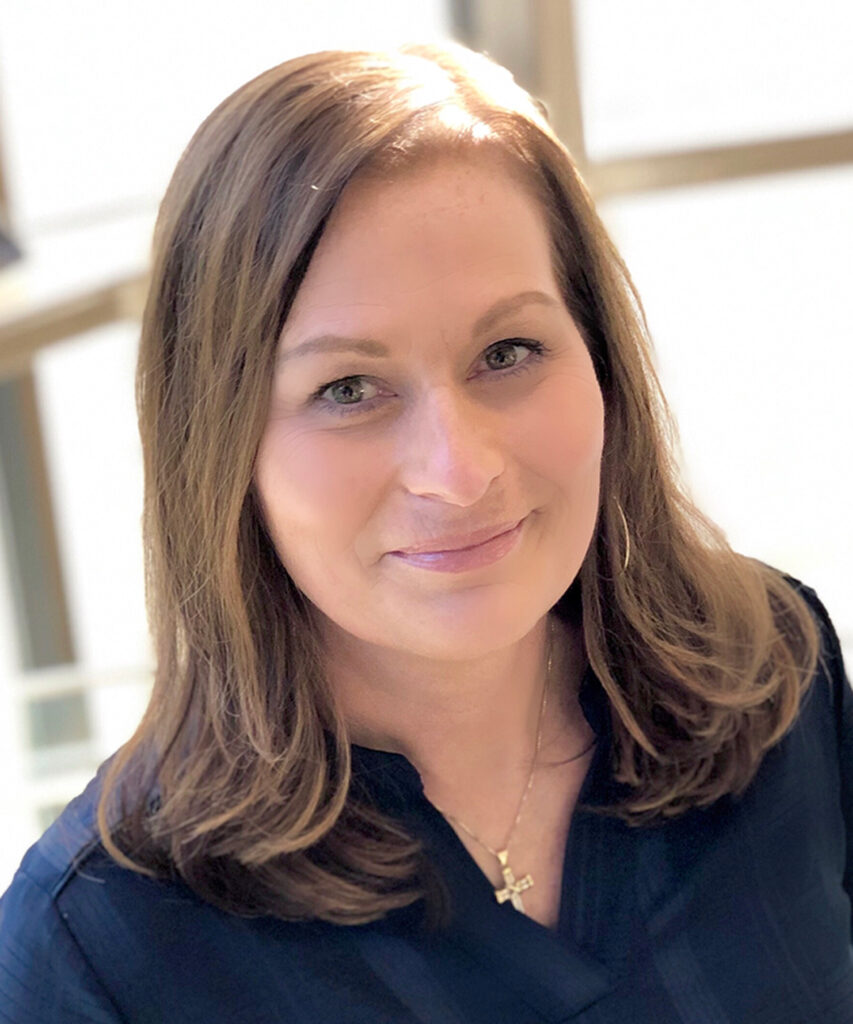
Margaret Steele
Vizient Senior Vice President, Med/Surg, Lab and Blood, GPO Services & Delivery
Please tell us about your role/responsibilities within your organization.
I lead the Vizient medical, surgical, lab and distribution teams as well as a product standardization program, which helps our members recognize maximum value in exchange for commitment. Our team facilitates multiple Vizient member councils that support these areas as well. I also have the honor to serve as the network champion for Vizient’s employee networking group, Dimensions, which promotes workplace awareness around the multitude of identities people have to engender a more inclusive environment.
In what ways has the supply chain changed for the better over the last 2-3 years?
Provider and supplier executives are more in tune with the importance of supply chain resiliency and the impact of supply disruption – specifically that last mile. We are starting to see more providers look for local suppliers to provide some insulation against the current transportation and labor challenges. Additionally, the last two years have sparked innovation to try to solve some of the most challenging issues. For example, we are seeing re-engineered products from manufacturers that reduce the use of raw materials, increased automation to mitigate labor force issues, recognition of the importance of a digital supply chain for end-to-end transparency and efficiency, and collaboration with governmental agencies to better understand the impact and importance of keeping the healthcare supply chain flowing.
What about its challenges? What keeps supply chain leaders up at night heading into late 2022?
Supply disruption, inflation, and labor challenges. Almost every supply chain team is short staffed. They are also challenged by clinical teams being short staffed, which means solving for supply disruptions can be even more difficult, especially if the solution requires additional training. In addition, most providers are still tasked with finding savings, which based on current economic conditions will likely have to come from process improvements and conservation strategies.
When you hear words like diversity and equity in the workplace, what does that mean to you? How can those things contribute to the success of an organization?
It’s abundantly clear that a more diverse workforce provides diversity of thought, which is necessary for true progress and innovation. Diversity means you must cast your net farther and with a bit more flexibility to find the best person for a given role. This requires changing your recruiting efforts to specifically target areas and schools that allow for a more diverse candidate pool.
Has anyone come alongside you to mentor you during your career? If so, can you tell us about that?
I’ve been fortunate enough to have several mentors over the years. I’m a firm believer that you need different mentors for different times in your career and specific areas of focus. I had an amazing mentor early in my career who taught me life lessons around business that I still use today. He taught me the importance of working through uncomfortable situations – sometimes going so far to push me into the deep end, way over my head – because those are the times that help you grow. He also taught me to extend grace during those uncomfortable situations instead of a harsh response, which is more reflexive. Basically, the Art of War (Sun Tzu) meets the Management Methods of Jesus (Robert Briner). These days I still have a handful of mentors that I rely on for strategy, feedback and navigating difficult situations. In turn, I mentor a handful of folks as well in varying stages of their career.
How do you focus on your growth as a leader?
I try to surround myself with others who are comfortable providing their opinions and feedback. I know it’s cliché to those in management, but I always try to hire people who are much smarter and have different experiences than me. I’ve also benefited from ongoing leadership learning and Vizient’s dedication to continued education. Some terrific programs include Professional Women in Healthcare, ELI Group – Executive Leadership Impact and Texas Women’s Foundation: Leadership Institute.
What project or initiative are you looking forward to working on in the next 3-6 months?
We have so many exciting things happening at Vizient as we continue our transformation into an expense management organization. We continue to seek out like-minded companies to align with through strategic partnerships and investments and launch new solutions that round out our ability to serve our members as their needs continue to evolve.
Our focus right now is transforming how we serve our providers around medical, surgical, lab and distribution. While we have been focused on supply assurance and resiliency via our supplier committed inventory programs, we have also invested heavily into diversity and domestic supplier partners. Now, it is time to bring it all together through a digital supply chain, ensuring that our data and analytics inform our members in every step of the way.

Jennifer Taylor
Director of Contracts for Universal Health Services
Please tell us about your role/responsibilities within your organization.
As Director of Contracts for Universal Health Services (NYSE: UHS), my responsibilities include leading all aspects of sourcing and contracting for our 392 facilities spanning across the Acute Care, Behavioral Health and Independence Physician Management divisions with about $2.5B in annual spend. I provide strategic leadership for the prudent sourcing of commodities, equipment and services, including evaluating alternatives, reviewing cost effectiveness, and soliciting competitive bids. I also lead the development and implementation of high impact, high spend sourcing opportunities and contracts. We are always striving to improve patient outcomes through overall product selection and efficacy. I provide oversight on overall supplier management and contract compliance programs, while ensuring adherence to our policies and procedures. I am responsible for the creation of the annual sourcing calendar to guide staff regarding contract priorities while managing expense reduction. I assist in administering the contract review process to validate the appropriate terms, conditions, pricing, vendors, and approvals.
What is unique here at UHS is that while I have my core job functions, I have had the ability to make the position my own and take on additional work that did not fall under my initial job description. One of those responsibilities is to run the Supply Chain internship program. Throughout the five years of developing this program, I have established relationships with multiple local universities which have served as our applicant pool for interns and full-time hires. The rotational project-based intern program I have developed ensures students have access to meaningful work, while focusing on their personal and professional growth. This summer (2022), we had our largest cohort yet with eight interns. This part of my role brings me great joy, being able to impact our interns and see them develop throughout the program. Over the years, we have even transitioned several interns to full-time hires on various teams within the department.
In what ways has the supply chain changed for the better over the last 2-3 years?
Over the last couple of years, I have seen the Supply Chain change for the better when it comes to overall resiliency and flexibility. The entire industry was challenged when the pandemic hit. Everyone had to find new ways of accomplishing the same task but now more efficiently and creatively. The disruption really allowed UHS Supply Chain team to take a step back and re-evaluate how we were conducting business. We were able to remain resilient by further diversifying our vendor portfolio through performing more rigorous onboarding, transforming our sourcing and procurement process and most important investing in our talent. By being agile and adaptive, we improved our overall service impact and it has made us a stronger organization as a result.
What about its challenges? What keeps supply chain leaders up at night heading into late 2022?
I strive to focus on things I can control directly. With the uncertainties in the industry right now, one question we have been asking is: how do we remain strategically aligned with business partners as the market has continually evolved. One way we have done this at UHS is by having more strategic conversations to identify vendors with whom we can continue to build our relationships. Having these types of strategic relationships in place served UHS well during the pandemic. We were able to call on these vendors to assist us with getting product quickly and coming up with creative solutions to backorders and allocation issues. We are now having conversations on how we can continue with a more proactive co-development type relationship where we share data and collaborate on various projects.
When you hear words like diversity and equity in the workplace, what does that mean to you? How can those things contribute to the success of an organization?
As a black woman in a predominantly white industry, diversity and equity in the workplace is something that is very important to me. Having diversity in the workplace allows for variety of thought and leads to more creativity. We can truly learn from everyone’s personal background and life experiences. These experiences are what set us apart from one another but also allow us to come together and solve complex problems. A workplace should resemble what America looks like today to ensure we support and reflect the communities in which we operate.
Diversity and equity contribute to the success of an organization as it leads to a more extensive talent pool. When an organization expands its applicant base, they open themselves up to potential new employees. I also feel that it can lead to increased employee engagement and satisfaction. Employees of diverse backgrounds can see that their employer truly cares about expanding their company culture and want to see it continue to develop and thrive. It is very important for everyone to see people that look like them in advanced leadership and more technical positions to know that one day they can do the same thing.
According to the last Awesome Women in Supply Chain survey, women comprise 41% of the supply chain industry and of that, minority women make up 14%. This statistic is very low, but I have to say that during my time at UHS I have always felt supported in my role and development and within our department, women comprise about 57% of the positions both at the employee and leadership level. My managers, Steven Reilly, Sr. Director Sourcing and Contracting, and Raymond Davis, VP of Supply Chain, have done a great job in ensuring I have access to the tools and resources that I need to be successful. This support has taken shape in many ways, from allowing me to devote time to developing the intern program to including me in strategic conversations. I am challenged daily to be creative, put my best work forward and create and implement new solutions to our everyday issues.
Has anyone come alongside you to mentor you during your career? If so, can you tell us about that?
At the start of my career, fresh out of college, mentorship was not something I did regularly or sought out. Now I can say I currently have two mentors that I work with at least twice a month, and two years ago I was invited by UHS HR, to take part in a group mentoring program as a member of The Power of Professional Women. I have evolved and grown my thought process and the way I approach mentorship. With my mentors, we discuss a range of topics from day-to-day work, long and short-term goals, skill development, additional growth opportunities. My mentors have two completely different backgrounds from myself and each other. One works inside my organization and the other I worked with at my first job out of college. They provide me with different perspectives on the various topics and have truly helped guide me with some difficult decisions. Having these mentors has been beneficial for my development and assisted me in obtaining the position I have today. I recommend to anyone who wants additional feedback on their performance and someone who champions for their success, to seek out a mentor.
I have committed myself to being a lifetime learner and always thinking about what is next. Part of my passion as a leader is helping to develop the members of the department. I have developed educational and mentor programs dedicated to those who are early on in their career and those in their mid-career. We continually work on identifying new areas in which we can improve. We meet at least monthly where one person gives a presentation on a development topic and we engage in discussion. This gives the team an opportunity to work on not only their presentation skills but to learn something new and hopefully incorporate it into their professional or personal life. Continued growth and development is critical not just for myself but those around me.
